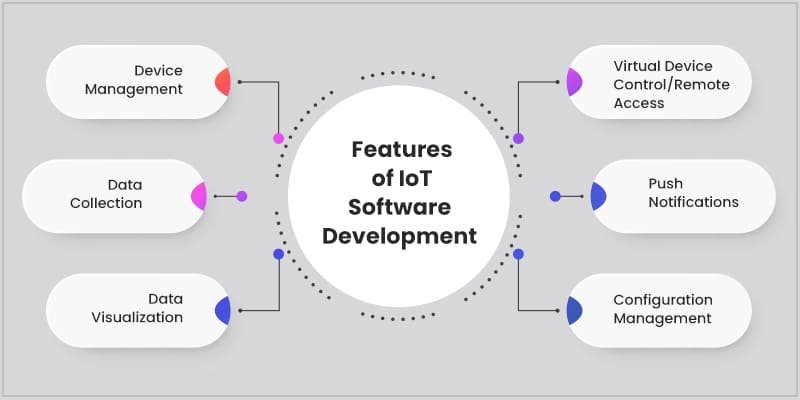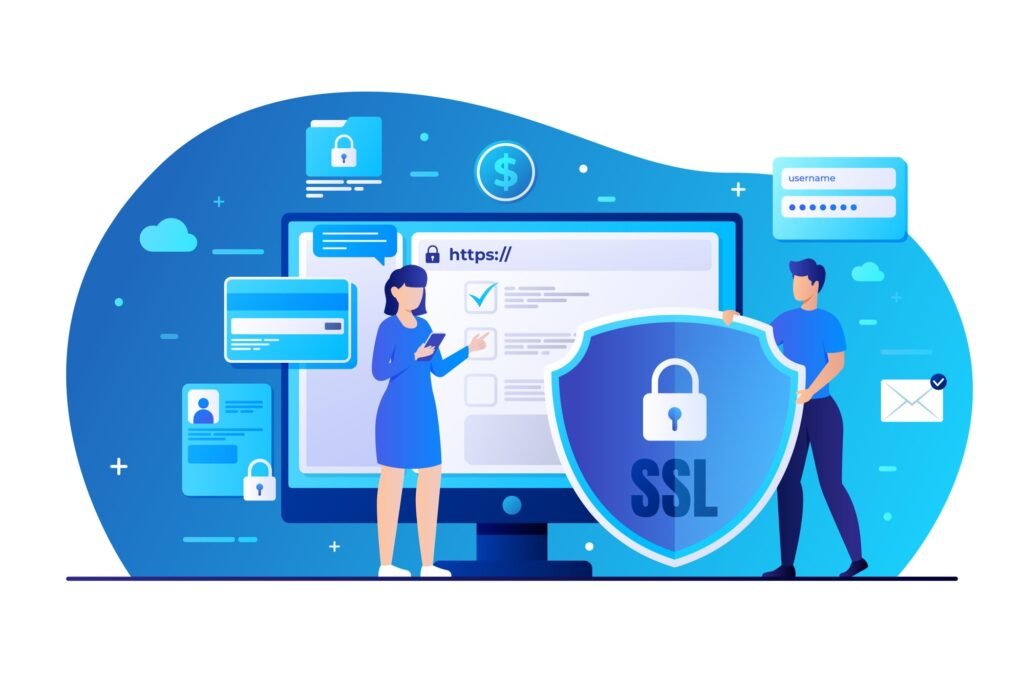The Internet of Things (IoT) has revolutionized the way devices communicate and interact with each other, enabling seamless integration between the physical and digital world. Software development for IoT devices requires a unique approach, as these devices operate in diverse environments, often with constrained resources, and need to communicate effectively with other devices and systems.
In this article, we’ll explore the core aspects of IoT software development, covering the essential components, programming languages, challenges, and best practices for developing software for IoT devices.
1. What is IoT?
The Internet of Things (IoT) refers to a network of physical devices that are embedded with sensors, software, and other technologies to collect and exchange data with other devices and systems over the internet. These devices include everyday items like smart thermostats, wearable fitness trackers, connected cars, industrial sensors, and more.
2. Core Components of IoT Software Development
Developing software for IoT devices involves several components:
2.1 Embedded Systems Software
The software that runs directly on IoT devices is often called embedded software. This software manages the hardware resources of the device, such as sensors, actuators, and communication modules, and typically has real-time processing requirements.
2.2 Communication Protocols
IoT devices use various communication protocols to send and receive data. Some of the most common protocols include:
- Wi-Fi: Widely used for smart home devices and consumer electronics.
- Bluetooth Low Energy (BLE): Used for short-range communication, especially in wearable devices.
- Zigbee and Z-Wave: Wireless standards commonly used for home automation.
- LoRa and NB-IoT: Long-range, low-power protocols used for industrial IoT applications.
2.3 Cloud Integration
Most IoT devices require integration with cloud platforms to store, process, and analyze data. This allows users and businesses to access real-time data and insights from remote devices. Common cloud platforms for IoT include AWS IoT, Google Cloud IoT, and Microsoft Azure IoT Hub.
2.4 Security
Security is a critical aspect of IoT software development, as IoT devices are vulnerable to cyberattacks. Implementing secure communication, data encryption, and authentication mechanisms is essential to protect IoT systems.
3. Programming Languages for IoT Software Development
The choice of programming language depends on the hardware, operating system, and performance requirements of the IoT device. Here are some of the most commonly used languages in IoT development:
3.1 C and C++
These languages are commonly used for writing low-level embedded software due to their close control over hardware resources. They are highly efficient and widely supported by most IoT platforms.
3.2 Python
Python is popular for its simplicity and versatility, making it a great choice for higher-level IoT applications and cloud integration. It’s often used in prototyping and building data processing pipelines for IoT systems.
3.3 Java
Java’s portability across platforms makes it suitable for developing IoT solutions, especially on resource-constrained devices. It’s commonly used in mobile and embedded systems.
3.4 JavaScript (Node.js)
JavaScript, particularly with Node.js, is increasingly used in IoT development for handling asynchronous events and server-side programming. It’s ideal for building IoT gateways and cloud-connected services.
4. Challenges in IoT Software Development
Developing software for IoT devices presents several unique challenges:
4.1 Limited Resources
IoT devices often have limited CPU, memory, and battery life. Developers need to write highly efficient code to ensure optimal performance without draining the device’s resources.
4.2 Security
Since IoT devices are connected to the internet, they are prone to security vulnerabilities. Implementing secure communication protocols, encrypting data, and following security best practices are critical to ensure device and network safety.
4.3 Scalability
IoT networks can scale to millions of devices, so the software must be designed to handle large amounts of data, connections, and interactions without degrading performance.
4.4 Interoperability
IoT devices often need to interact with different devices and platforms. Ensuring interoperability across various systems, hardware, and communication protocols is key to building successful IoT applications.
5. Best Practices for IoT Software Development
5.1 Modular Design
Breaking down software into smaller, reusable modules allows developers to build flexible systems that can be easily updated and scaled. Modular design is particularly important in IoT due to the diverse range of hardware and use cases.
5.2 Data Management
Handling and processing data efficiently is crucial for IoT applications, especially when dealing with massive streams of data from numerous devices. Implementing edge computing (processing data closer to the device) can reduce latency and network bandwidth usage.
5.3 Power Optimization
Many IoT devices are battery-powered, so software must be optimized for low power consumption. Techniques such as sleep modes, duty cycling, and efficient use of sensors and communication modules can help prolong battery life.
5.4 Testing and Validation
Thorough testing is essential to ensure IoT devices work reliably in the field. Developers should perform extensive testing, including unit tests, integration tests, and real-world simulations, to ensure robustness and reliability.
5.5 Security by Design
Security should be built into every layer of IoT software development. From secure boot processes to encrypted communication channels, every component of the software should adhere to security best practices.
6. Use Cases for IoT Software Development
IoT software development is applied across a wide range of industries and use cases:
- Smart Homes: IoT devices like thermostats, security cameras, and lighting systems are controlled remotely via software, enhancing convenience and energy efficiency.
- Healthcare: Wearable devices and remote patient monitoring systems collect vital health data in real-time, enabling faster diagnosis and treatment.
- Industrial IoT (IIoT): Factories and industrial plants use IoT sensors to monitor machinery, optimize processes, and predict equipment failures through predictive maintenance.
- Agriculture: Smart sensors help farmers monitor soil moisture, temperature, and other environmental factors to improve crop yields.
- Smart Cities: IoT solutions are implemented to improve urban infrastructure, such as traffic management, waste collection, and public safety.
7. Conclusion
Software development for IoT devices requires a comprehensive understanding of embedded systems, communication protocols, cloud integration, and security. With the growing number of connected devices, building efficient, scalable, and secure IoT software is essential to unlocking the full potential of IoT technology.
At TechsterTech.com, we specialize in developing custom IoT solutions tailored to your specific needs. Whether you’re building smart home devices, industrial sensors, or cloud-integrated platforms, our team can help you design and implement cutting-edge IoT systems.



